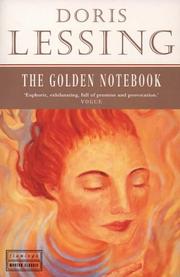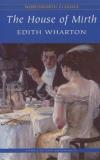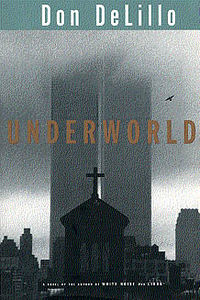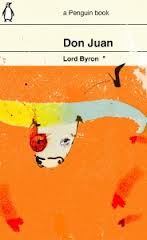Author Photo And Bio
 1. The Golden Notebook by Doris Lessing (1962). In her epic fusion of structural experiment and exhaustive realism, Lessing lays bare the splintered state of modern womanhood. In four separate notebooks, Anna Wulf records different aspects of her life: her consecutive and unfulfilling love affairs, her memories of Africa, her struggles with motherhood, and above all, her growing disenchantment with communism. Lessing’s novel foreshadowed the concerns of the women’s movement, becoming a major feminist text.
1. The Golden Notebook by Doris Lessing (1962). In her epic fusion of structural experiment and exhaustive realism, Lessing lays bare the splintered state of modern womanhood. In four separate notebooks, Anna Wulf records different aspects of her life: her consecutive and unfulfilling love affairs, her memories of Africa, her struggles with motherhood, and above all, her growing disenchantment with communism. Lessing’s novel foreshadowed the concerns of the women’s movement, becoming a major feminist text.
 2. The Transit of Venus by Shirley Hazzard (1980). Like planets moving across the sky—always the same yet always changing—this sumptuously written novel follows the lives of two orphaned sisters who leave Australia in the 1950s to begin new lives in England. While Grace turns to marriage for a safe transit through life, Caro charts a riskier course, one that brings her love and betrayal over the decades.
2. The Transit of Venus by Shirley Hazzard (1980). Like planets moving across the sky—always the same yet always changing—this sumptuously written novel follows the lives of two orphaned sisters who leave Australia in the 1950s to begin new lives in England. While Grace turns to marriage for a safe transit through life, Caro charts a riskier course, one that brings her love and betrayal over the decades.
 3. The House of Mirth by Edith Wharton (1905). Caught up in the web of old New York society, Lily Bart angles for a wealthy husband. Though presented with ample opportunity, the beautiful and well-connected Lily rejects one man after another as not rich enough, including her true love, Laurence Stern. When she becomes a hapless victim of her own ambition—blackmailed and wrongly accused of adultery—Lily is cast out of high society before making one final attempt to redeem herself.
3. The House of Mirth by Edith Wharton (1905). Caught up in the web of old New York society, Lily Bart angles for a wealthy husband. Though presented with ample opportunity, the beautiful and well-connected Lily rejects one man after another as not rich enough, including her true love, Laurence Stern. When she becomes a hapless victim of her own ambition—blackmailed and wrongly accused of adultery—Lily is cast out of high society before making one final attempt to redeem herself.
 4. Good Morning, Midnight by Jean Rhys (1939). On hell’s short bookshelf of great writing about alcohol, this novel is narrated by Sasha Jansen, a semi-writer at loose ends who is planning a permanent swan dive into the bottle. While Virginia Woolf thought women needed a room of their own for creative work, Jansen believes “a room is a place where you hide from the wolves outside.” Jansen’s fugue through 1930s Paris, while pursued by age, disapproving bartenders, and a stubborn gigolo, is a café blues song: stylish and haunting.
4. Good Morning, Midnight by Jean Rhys (1939). On hell’s short bookshelf of great writing about alcohol, this novel is narrated by Sasha Jansen, a semi-writer at loose ends who is planning a permanent swan dive into the bottle. While Virginia Woolf thought women needed a room of their own for creative work, Jansen believes “a room is a place where you hide from the wolves outside.” Jansen’s fugue through 1930s Paris, while pursued by age, disapproving bartenders, and a stubborn gigolo, is a café blues song: stylish and haunting.
 5. Middlemarch by George Eliot (1871–72). Dorothea Brooke is a pretty young idealist whose desire to improve the world leads her to marry the crusty pedant Casaubon. This mistake takes her down a circuitous and painful path in search of happiness. The novel, which explores society’s brakes on women and deteriorating rural life, is as much a chronicle of the English town of Middlemarch as it is the portrait of a lady. Eliot excels at parsing moments of moral crisis so that we feel a character’s anguish and resolve. Her intelligent sympathy for even the most unlikable people redirects our own moral compass toward charity rather than enmity.
5. Middlemarch by George Eliot (1871–72). Dorothea Brooke is a pretty young idealist whose desire to improve the world leads her to marry the crusty pedant Casaubon. This mistake takes her down a circuitous and painful path in search of happiness. The novel, which explores society’s brakes on women and deteriorating rural life, is as much a chronicle of the English town of Middlemarch as it is the portrait of a lady. Eliot excels at parsing moments of moral crisis so that we feel a character’s anguish and resolve. Her intelligent sympathy for even the most unlikable people redirects our own moral compass toward charity rather than enmity.
 6. Invisible Man by Ralph Ellison (1952). This modernist novel follows the bizarre, often surreal adventures of an unnamed narrator, a black man, whose identity becomes a battleground in racially divided America. Expected to be submissive and obedient in the South, he must decipher the often contradictory rules whites set for a black man’s behavior. Traveling north to Harlem, he meets white leaders intent on controlling and manipulating him. Desperate to seize control of his life, he imitates Dostoevsky’s underground man, escaping down a manhole where he vows to remain until he can define himself. The book’s famous last line, “Who knows, but that on the lower frequencies I speak for you,” suggests how it transcends race to tell a universal story of the quest for self-determination.
6. Invisible Man by Ralph Ellison (1952). This modernist novel follows the bizarre, often surreal adventures of an unnamed narrator, a black man, whose identity becomes a battleground in racially divided America. Expected to be submissive and obedient in the South, he must decipher the often contradictory rules whites set for a black man’s behavior. Traveling north to Harlem, he meets white leaders intent on controlling and manipulating him. Desperate to seize control of his life, he imitates Dostoevsky’s underground man, escaping down a manhole where he vows to remain until he can define himself. The book’s famous last line, “Who knows, but that on the lower frequencies I speak for you,” suggests how it transcends race to tell a universal story of the quest for self-determination.
 7. Tristram Shandy by Laurence Sterne (1759–67). Sterne promises the “life and opinions” of his protagonist. Yet halfway through the fourth volume of nine, we are still in the first day of the hero’s life thanks to marvelous digressions and what the narrator calls “unforeseen stoppages”—detailing the quirky habits of his eccentric family members and their friends. This broken narrative is unified by Sterne’s comic touch, which shimmers in this thoroughly entertaining novel that harks back to Don Quixote and foreshadows Ulysses.
7. Tristram Shandy by Laurence Sterne (1759–67). Sterne promises the “life and opinions” of his protagonist. Yet halfway through the fourth volume of nine, we are still in the first day of the hero’s life thanks to marvelous digressions and what the narrator calls “unforeseen stoppages”—detailing the quirky habits of his eccentric family members and their friends. This broken narrative is unified by Sterne’s comic touch, which shimmers in this thoroughly entertaining novel that harks back to Don Quixote and foreshadows Ulysses.
 8. Underworld by Don DeLillo (1997).
8. Underworld by Don DeLillo (1997).
 9. Germinal by Émile Zola (1884). As in old pictures of Pittsburgh, a pall of industrial smoke seems to hang over Zola’s grim, stirring novel about a miners strike. Zola uses his usual style of fine-grained graininess to describe the lives crushed (sometimes literally) by work, and the excessive poverty to which the miners’ families seem condemned. His is a collective portrait in which his main character, Etienne Lantier, gets engulfed by the hugeness and dangerousness of the mines (which bear the sinister nickname Le Voreux, or “the voracious ones”) and the eventual revolt against the mining company.
9. Germinal by Émile Zola (1884). As in old pictures of Pittsburgh, a pall of industrial smoke seems to hang over Zola’s grim, stirring novel about a miners strike. Zola uses his usual style of fine-grained graininess to describe the lives crushed (sometimes literally) by work, and the excessive poverty to which the miners’ families seem condemned. His is a collective portrait in which his main character, Etienne Lantier, gets engulfed by the hugeness and dangerousness of the mines (which bear the sinister nickname Le Voreux, or “the voracious ones”) and the eventual revolt against the mining company.
 10. Don Juan by Lord Byron (1819). Byron was a gentleman, a womanizer, a cad, and a liberator. He poured a lifetime of observations into this seventeen canto poem. Ostensibly about a Spanish boy sent abroad by his mother after an unfortunate love affair, it has the spontaneous gaiety of a man who is courteously maintaining the fiction that the reader’s experience of women, politics, poetry, and the world is as extensive as his own. Thus Byron transformed his greatest masterpiece—his life—into art.
10. Don Juan by Lord Byron (1819). Byron was a gentleman, a womanizer, a cad, and a liberator. He poured a lifetime of observations into this seventeen canto poem. Ostensibly about a Spanish boy sent abroad by his mother after an unfortunate love affair, it has the spontaneous gaiety of a man who is courteously maintaining the fiction that the reader’s experience of women, politics, poetry, and the world is as extensive as his own. Thus Byron transformed his greatest masterpiece—his life—into art.